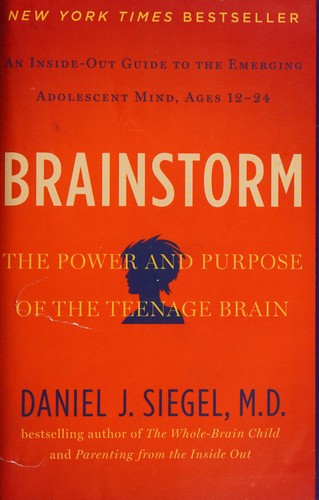Check nearby libraries
Buy this book

Between the ages of 12 and 24, the brain changes in important, and oftentimes maddening and challenging ways. In this book, the author, a psychiatrist busts a number of commonly held myths about adolescence. He shows that, if parents and teens can work together to form a deeper understanding of the brain science behind all the tumult, they will be able to turn conflict into connection and form a deeper understanding of one another. According to the author, during adolescence we learn important skills, such as how to leave home and enter the larger world, how to connect deeply with others, and how to safely experiment and take risks, thereby creating strategies for dealing with the world's increasingly complex problems. Here he presents an inside-out approach to focusing on how brain development affects our behavior and relationships. Drawing on important new research in the field of interpersonal neurobiology, he explores exciting ways in which understanding how the brain functions can improve the lives of adolescents, making their relationships more fulfilling and less lonely and distressing on both sides of the generational divide.
Check nearby libraries
Buy this book

Previews available in: English
Showing 2 featured editions. View all 2 editions?
| Edition | Availability |
|---|---|
|
1
Brainstorm: the power and purpose of the teenage brain
2015, Jeremy P. Tarcher/Penguin, a member of Penguin Group (USA)
in English
- First trade paperback edition.
0399168834 9780399168833
|
aaaa
Libraries near you:
WorldCat
|
|
2
Brainstorm: the power and purpose of the teenage brain
2013, Jeremy P. Tarcher/Penguin, a member of Penguin Group (USA)
in English
158542935X 9781585429356
|
zzzz
Libraries near you:
WorldCat
|
Book Details
Published in
New York
Table of Contents
Edition Notes
Includes index.
Classifications
The Physical Object
ID Numbers
Work Description
Between the ages of 12 and 24, the brain changes in important, and oftentimes maddening and challenging ways. In this book, the author, a psychiatrist busts a number of commonly held myths about adolescence. He shows that, if parents and teens can work together to form a deeper understanding of the brain science behind all the tumult, they will be able to turn conflict into connection and form a deeper understanding of one another. According to the author, during adolescence we learn important skills, such as how to leave home and enter the larger world, how to connect deeply with others, and how to safely experiment and take risks, thereby creating strategies for dealing with the world's increasingly complex problems. Here he presents an inside-out approach to focusing on how brain development affects our behavior and relationships. Drawing on important new research in the field of interpersonal neurobiology, he explores exciting ways in which understanding how the brain functions can improve the lives of adolescents, making their relationships more fulfilling and less lonely and distressing on both sides of the generational divide.
Community Reviews (0)
Feedback?History
- Created July 28, 2020
- 6 revisions
Wikipedia citation
×CloseCopy and paste this code into your Wikipedia page. Need help?
| December 19, 2022 | Edited by MARC Bot | import existing book |
| December 8, 2022 | Edited by ImportBot | import existing book |
| February 12, 2022 | Edited by ImportBot | import existing book |
| December 30, 2021 | Edited by ImportBot | import existing book |
| July 28, 2020 | Created by MARC Bot | Imported from marc_claremont_school_theology MARC record. |










